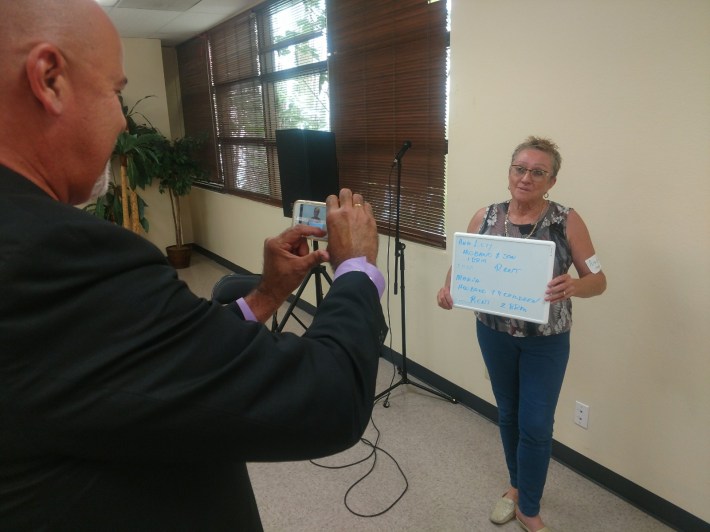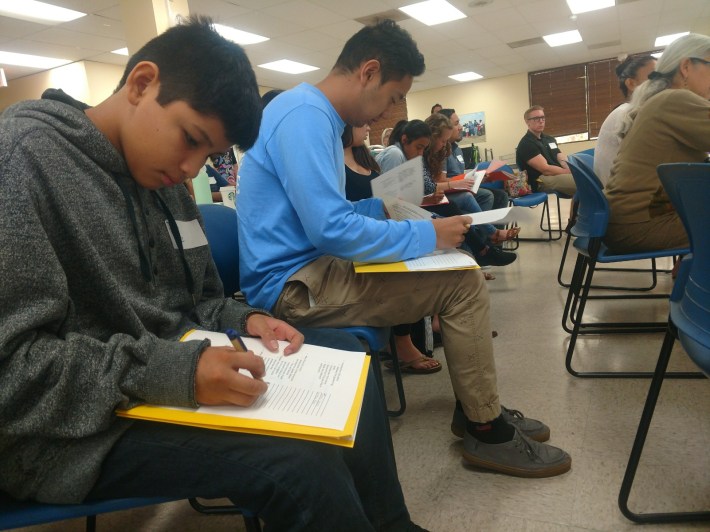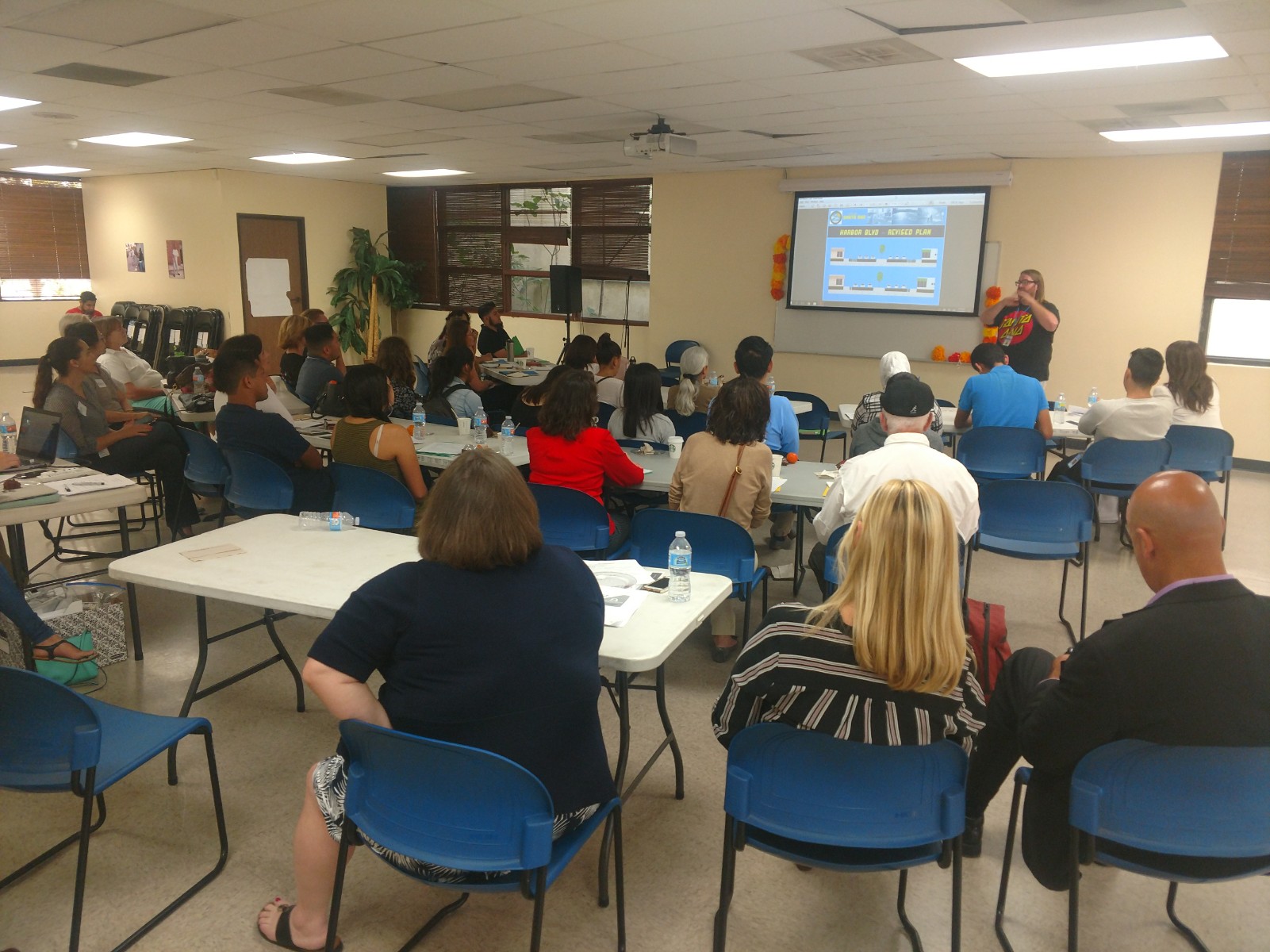As state and regional government entities continue to make strides in understanding how to connect planning for housing and transportation, that information doesn’t always trickle into neighborhoods.
So it was an encouraging sight two weeks ago when more than thirty Orange County residents gathered for a two-day training on housing, transportation, and food access.
The day was dense with information, with the first half of Friday being dedicated solely to active transportation plans and policies. The second half of the day gave context to Orange County’s housing crisis, leading finally to a discussion on how the two issues impact people’s access to affordable, healthy foods.
The second day was spent navigating Santa Ana streets to inspect active transportation infrastructure and visit an affordable housing development.
This is the third event hosted by Alliance for a Healthy Orange County in the past year that aimed to connect these three issues. The training was created to provide a platform for residents and advocates to learn skills and knowledge in these areas and hopefully share them with their networks, said Michele Martinez, executive director of AHOC.
While the weekend's invitation singled out residents and community leaders in Anaheim, Garden Grove, and Santa Ana, the resulting turnout was mixed: Santa Ana folks made up the majority in attendance --- the event was hosted in Santa Ana --- but I met three residents from Anaheim, one from Buena Park, two from Orange and two students from Irvine.
The organizers wanted to help attendees connect the dots with both informational presentations and hands-on activities. After People for Housing Orange County co-founder Elizabeth Hansburg finished her presentation, she and her team led a story-gathering activity. With markers and a dry erase board, participants were asked to share their housing story in as much detail as possible. Then a photo was taken with them beside their written story and shared on Twitter with the hashtag #HousingStory.
A sample:
“I live in a two-bedroom apt with nine people. 69 percent of my dad's income goes to pay rent. My family pays $1400 towards rent,” said Evelyn Torres, a fourteen-year-old volunteer at KidWorks, one of the event’s organizers.
“90 percent of my family's income goes to rent for a one-room apartment with five people,” said Josue Cruz, a twelve-year-old student at Villa Middle School.

The high cost of housing has been getting lots of play in the media, and for good reason. The county has seen skyrocketing rents, millennials living with their parents out of necessity, and a spike in homelessness.
Many of these ills stem from the lack of housing stock, said Hansburg. The demand for housing --- both market rate and affordable --- has outpaced the supply, she said, and this has driven up prices county- and statewide.
In another activity, Maribel Mateo, a volunteer at KidWorks, led an exercise in how to deliver comments at government forums such as city council or board of supervisors meetings. On a one-page handout, attendees filled out a sheet that directed them to write out an introduction (address the governing body, provide full name), the main point (state the issue, explain why it’s an issue, and say what you are asking for), and a closing (define a follow-up action and give an appreciation).

Addressing Friday’s group after a session, Martinez said that understanding various government policies and processes may seem daunting and cumbersome, but they are necessary in order to bring improvements into the community. Early on in her tenure as a Santa Ana city council member, Martinez said, when she advocated for city improvements, city, state, and regional officials wouldn’t award money because plans weren’t in place.
“When we want projects, we just want the city to do it,” she said. “Unfortunately, you have to go through these processes, and then advocate to your representatives,” said Martinez.
Adriana Valencia Wences, a Santa Ana resident and a recent Cal State Fullerton graduate, said she attended the workshop because she had an interest in studying urban planning. She said that the training gave her a general idea of how Santa Ana and the surrounding cities deal with urban issues, and she wanted to learn more.
AHOC staff hope to continue the conversation at its fourth Regional Active Transportation Forum on September 22. The event is free and will be hosted in Santa Ana at Delhi Center, 505 E Central Ave, Santa Ana, CA 92707. Click here to RSVP.






